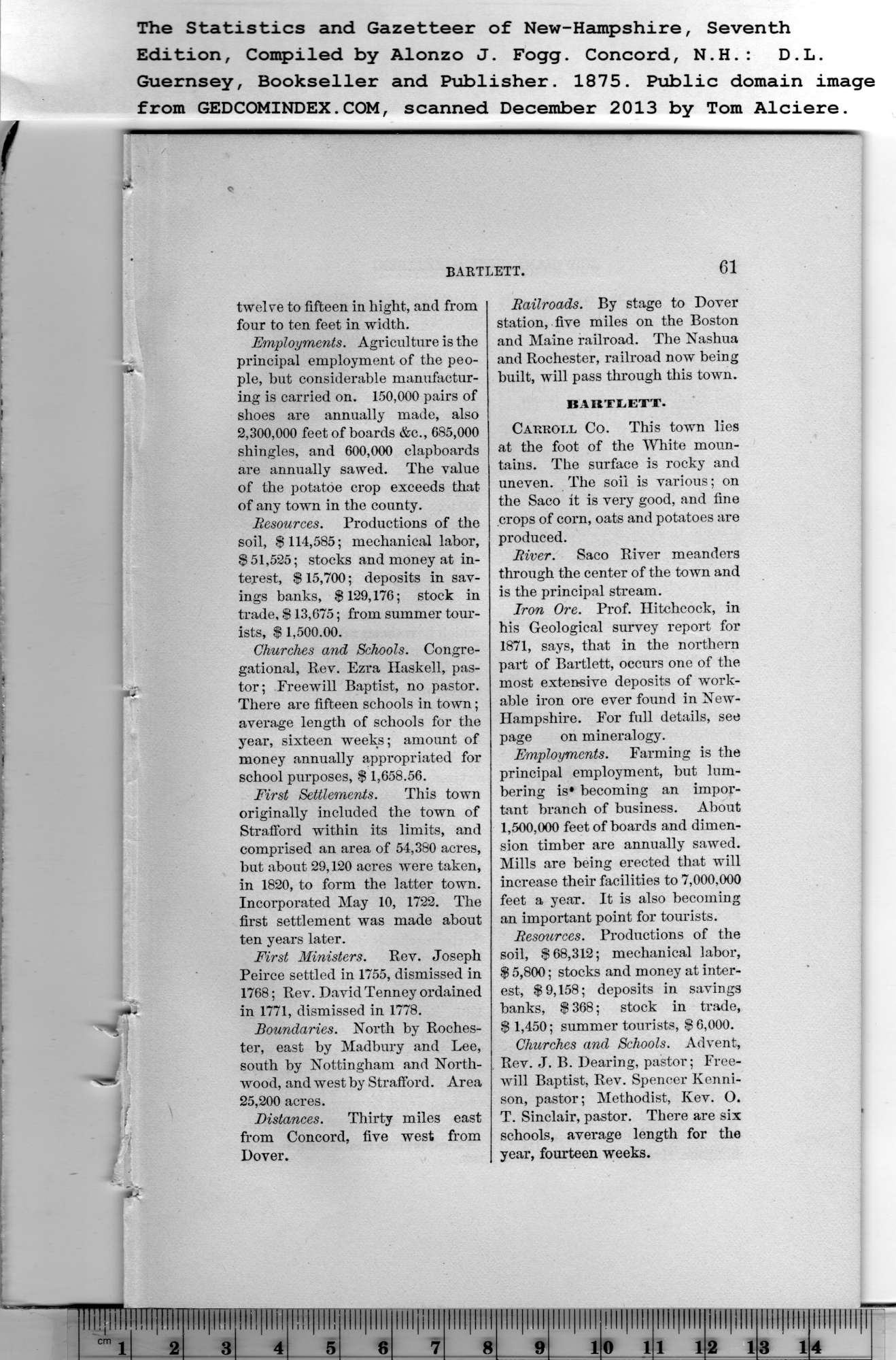|
twelve to fifteen in hight, and from
four to ten feet in width.
Employments. Agriculture is the
principal employment of the peo-
ple, but considerable manufactur-
ing is carried on. 150,000 pairs of
shoes are annually made, also
2,300,000 feet of boards &c., 685,000
shingles, and 600,000 clapboards
are annually sawed. The value
of the potatoe crop exceeds that
of any town in the county.
Resources. Productions of the
soil, $114,585; mechanical labor,
$51,525; stocks and money at in-
terest, $ 15,700; deposits in sav-
ings banks, $129,176; stock in
trade, $ 13,675; from summer tour-
ists, $ 1,500.00.
Churches and Schools. Congre-
gational, Rev. Ezra Haskell, pas-
tor; Freewill Baptist, no pastor.
There are fifteen schools in town;
average length of schools for the
year, sixteen weeks; amount of
money annually appropriated for
school purposes, $ 1,658.56.
First Settlements. This town
originally included the town of
Strafford within its limits, and
comprised an area of 54,380 acres,
but about 29,120 acres were taken,
in 1820, to form the latter town.
Incorporated May 10, 1722. The
first settlement was made about
ten years later.
First Ministers. Rev. Joseph
Peirce settled in 1755, dismissed in
1768; Rev. David Tenney ordained
in 1771, dismissed in 1778.
Boundaries. North by Roches-
ter, east by Madbury and Lee,
south by Nottingham and North-
wood, and west by Strafford. Area
25,200 acres.
Distances. Thirty miles east
from Concord, five west from
Dover. |
Railroads. By stage to Dover
station, five miles on the Boston
and Maine railroad. The Nashua
and Rochester, railroad now being
built, will pass through this town.
BARTLETT.
Carkoix Co. This town lies
at the foot of the White moun-
tains. The surface is rocky and
uneven. The soil is various; on
the Saco it is very good, and fine
crops of corn, oats and potatoes are
produced.
River. Saco River meanders
through the center of the toAvn and
is the principal stream.
Iron Ore. Prof. Hitchcock, in
his Geological survey report for
1871, says, that in the northern
part of Bartlett, occurs one of the
most extensive deposits of work-
able iron ore ever found in New-
Hampshire. For full details, see
page on mineralogy.
Employments. Farming is the
principal employment, but lum-
bering is* becoming an impor-
tant branch of business. About
1,500,000 feet of boards and dimen-
sion timber are annually sawed.
Mills are being erected that will
increase their facilities to 7,000,000
feet a year. It is also becoming
an important point for tourists.
Resources. Productions of the
soil, $68,312; mechanical labor,
$ 5,800; stocks and money at inter-
est, $9,158; deposits in savings
banks, $368; stock in trade,
$ 1,450; summer tourists, $ 6,000.
Churches and Schools. Advent,
Rev. J. B. Dearing, pastor; Free-
will Baptist, Rev. Spencer Kenni-
son, pastor; Methodist, Kev. O.
T. Sinclair, pastor. There are six
schools, average length for the
year, fourteen weeks. |
